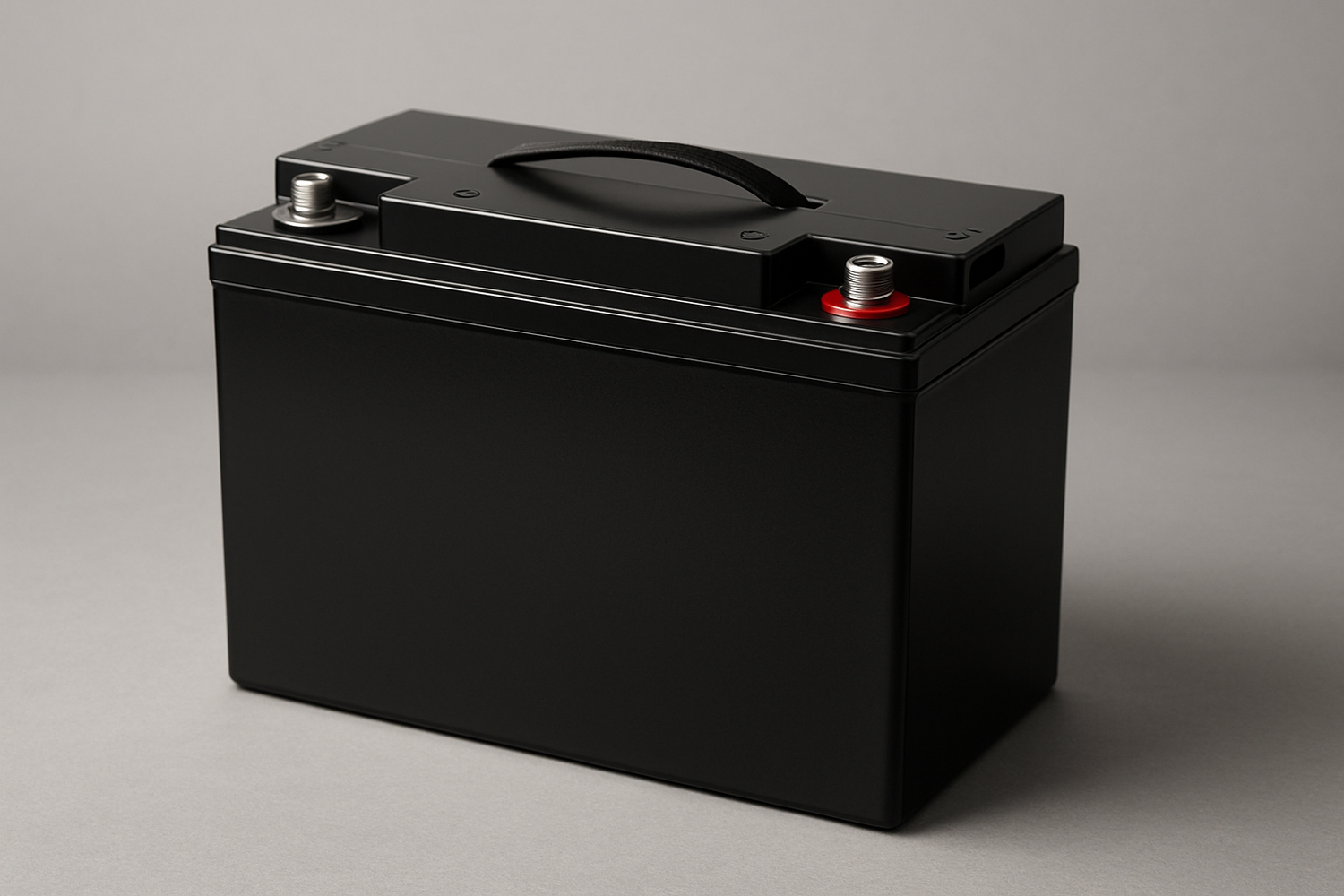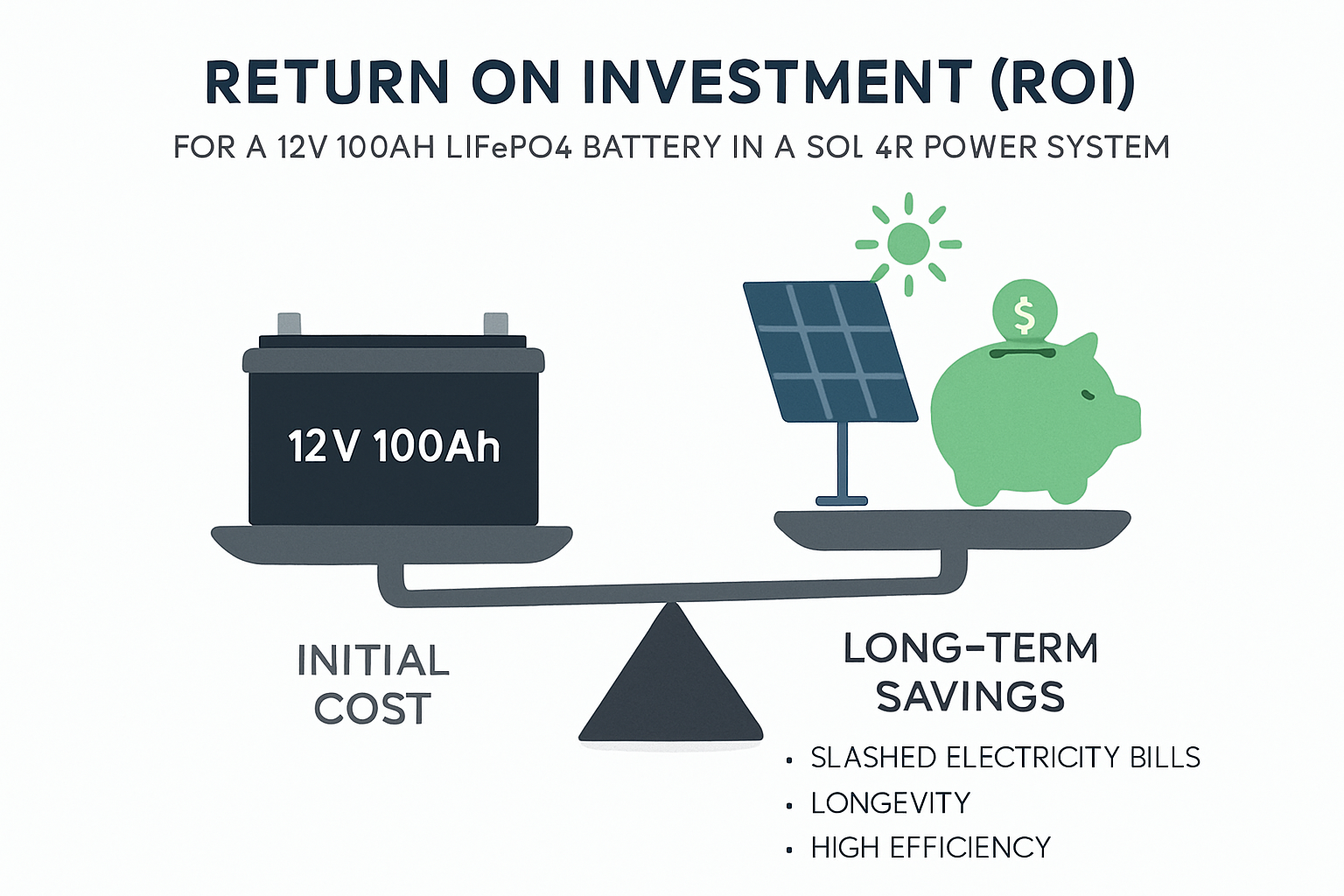The 12V 100Ah LiFePO4 battery is rapidly becoming a cornerstone of modern energy storage. Its versatility and robust performance make it a leading choice for recreational vehicles (RVs), marine applications, and off-grid solar installations. For anyone seeking energy independence, understanding this technology is no longer optional. This text provides a complete overview to help you make an informed decision, moving beyond simple specifications to cover practical applications and long-term value.
Understanding the Core Technology: What is a LiFePO4 Battery?
At its heart, a 12V 100Ah LiFePO4 battery is more than just a power source; it's a sophisticated energy solution. The key is its Lithium Iron Phosphate chemistry, which sets it apart from other lithium-ion and traditional lead-acid batteries.
The Chemistry Advantage: Safety and Stability
The chemical makeup of a lithium iron phosphate battery is fundamental to its safety. Unlike other lithium chemistries that use cobalt oxide, LiFePO4 uses phosphate, creating an exceptionally stable molecular structure. This structure is highly resistant to thermal runaway, even under harsh conditions like overcharging or physical damage. The U.S. Department of Energy has identified lithium as a critical mineral for rechargeable batteries, underscoring the importance of safe and reliable chemistries like LiFePO4. This inherent stability provides peace of mind, a critical factor in both mobile and residential applications.
Deep Cycle Performance and Longevity
LiFePO4 batteries are engineered for deep cycle use, meaning they can be repeatedly discharged to a significant portion of their capacity without sustaining damage. A typical LiFePO4 battery can handle 3,000 to 7,000 charge cycles, a stark contrast to the 300-1,000 cycles of a comparable lead-acid battery. A key factor in this longevity is its tolerance for a deep depth of discharge (DoD). While lead-acid batteries are often limited to a 50% DoD to avoid damage, a LiFePO4 battery can be safely discharged to 80% or even 100% in a pinch. This superior cycle life means a single LiFePO4 battery can outlast multiple sets of lead-acid batteries, making it a more durable long-term solution. For a deeper analysis, you can explore What Is the Real-World Lifespan of a 12V 100Ah LiFePO4 Battery?
Key Performance Metrics You Should Know
Beyond cycle life, several other metrics highlight the superiority of a 12v 100ah LiFePO4 battery. It maintains a stable voltage output throughout most of its discharge cycle, ensuring your appliances run efficiently without the voltage sag common in lead-acid batteries. Furthermore, LiFePO4 batteries boast a higher energy density, meaning they pack more power into a smaller and lighter package. Their round-trip efficiency is often above 95%, compared to 80-85% for lead-acid, meaning less energy is wasted during charging and discharging. To learn more about these critical figures, consider reading A Deep Dive into 12V 100Ah LiFePO4 Battery Performance Metrics.
| Feature | 12V 100Ah LiFePO4 Battery | 12V 100Ah AGM Lead-Acid Battery |
|---|---|---|
| Cycle Life (at 80% DoD) | 3,000 - 7,000+ Cycles | 300 - 700 Cycles (at 50% DoD) |
| Usable Capacity (DoD) | 80-100% | 50% |
| Round-Trip Efficiency | >95% | ~80-85% |
| Weight (Approx.) | 11-14 kg | 28-32 kg |
| Maintenance | None | None (but sensitive to deep discharge) |
LiFePO4 in Action: Top Applications for 12V 100Ah Batteries
The unique characteristics of the 12V 100Ah lithium iron phosphate battery make it an ideal fit for a wide range of demanding applications. Its reliability and efficiency are driving its adoption in mobile living, renewable energy, and backup power systems.
Powering Adventures: RVs, Marine, and Overlanding
For those who embrace a mobile lifestyle, power is freedom. The 12V 100Ah LiFePO4 battery is the `best 12v 100ah deep cycle battery for RV` and marine use because it is lightweight, compact, and requires no maintenance. A lighter battery reduces overall vehicle weight, which can contribute to better fuel efficiency. Its ability to deliver consistent power is crucial for running everything from refrigerators and lights to navigation equipment, ensuring a comfortable and safe trip.
Achieving Energy Independence: Off-Grid Solar Systems
Off-grid solar systems depend on efficient energy storage to provide power when the sun isn't shining. The high efficiency and long lifespan of LiFePO4 batteries make them a perfect match for solar energy. The International Renewable Energy Agency (IRENA) highlights that rapidly improving battery technologies are essential for enabling greater system flexibility as the share of renewables increases. A 12V 100Ah LiFePO4 battery captures and stores solar energy with minimal loss, ensuring that more of the power you generate is available when you need it. This efficiency is key to building a resilient and self-sufficient power system. To optimize your setup, see How to Maximize Solar Storage with a 12V 100Ah LiFePO4 Battery.
Reliable Backup and Emergency Power
In an era of increasingly frequent power outages, having a reliable backup system is critical. A 12V 100Ah LiFePO4 battery can serve as the core of an uninterruptible power supply (UPS) for essential home or office equipment. Its low self-discharge rate means it can hold a charge for long periods, ready to provide power at a moment's notice. This makes it a dependable solution for keeping critical systems online during an emergency.
Making the Right Choice: Selecting Your 12V 100Ah LiFePO4 Battery
Not all LiFePO4 batteries are created equal. Making an informed choice involves looking beyond the basic specifications and understanding the components that ensure safety, longevity, and performance.
The Role of the Battery Management System (BMS)
The Battery Management System (BMS) is the brain of a LiFePO4 battery. This electronic circuit is non-negotiable for safety and performance. It continuously monitors cell voltage, current, and temperature, protecting the battery from overcharging, over-discharging, short circuits, and extreme temperatures. A high-quality BMS also performs cell balancing, ensuring all cells in the pack are charged and discharged evenly. This process is vital for maximizing the battery's capacity and extending its lifespan. A well-engineered BMS is a hallmark of a reliable battery, reflecting a manufacturer's commitment to safety and quality.
Deciphering Specifications: Beyond Volts and Amps
When comparing batteries, it's important to look at specifications like the C-rate, which defines the rate at which a battery can be charged or discharged. A 1C rating on a 100Ah battery means it can deliver 100 amps for one hour. Also, check the operating temperature range to ensure it matches your climate. Physical dimensions and terminal types are also practical considerations for a seamless installation. For a detailed checklist, refer to this guide on 7 Key Factors for Choosing the Best 12V 100Ah LiFePO4 Battery.
Evaluating Total Cost of Ownership (TCO)
While LiFePO4 batteries have a higher upfront cost, their total cost of ownership is significantly lower than lead-acid alternatives. This is due to their vastly longer lifespan, which eliminates the need for frequent replacements. A single LiFePO4 battery can last as long as 6 to 11 sets of lead-acid batteries. When you factor in replacement costs, labor, and the superior performance and efficiency, the initial investment in LiFePO4 technology proves more economical over time. To calculate your potential savings, review Your Ultimate Guide to 12V 100Ah LiFePO4 Battery ROI for Solar.
Disclaimer: This information is for educational purposes only and does not constitute financial or investment advice.
Practical Ownership: Installation, Use, and Maintenance
Proper care and handling will ensure you get the maximum performance and lifespan from your 12V 100Ah LiFePO4 battery. Although these batteries are robust, following best practices is always recommended.
Installation Best Practices
When installing your battery, ensure it is in a dry, ventilated area and securely mounted to prevent movement. Use the correct gauge of cables to handle the expected current and ensure all connections are tight and clean. While LiFePO4 batteries do not produce gas during normal operation, proper ventilation is still a good safety measure. For complex systems, especially those integrated with solar panels and inverters, consulting with a qualified professional is highly recommended.
Common Pitfalls and How to Avoid Them
One common mistake is using a charger designed for lead-acid batteries without confirming it has a compatible lithium charging profile. Using the wrong charger can lead to undercharging or, in some cases, damage the BMS. Another pitfall is connecting batteries of different ages or capacities in the same bank, which can lead to imbalances and reduced performance. To prevent costly errors, see this resource on Avoid These 5 Costly Mistakes with 12V 100Ah LiFePO4 Batteries.
The Myth of "Maintenance-Free"
LiFePO4 batteries are often called "maintenance-free" because they don't require watering or equalization charges like flooded lead-acid batteries. This is largely true, but it doesn't mean you should "install and forget." It is good practice to periodically inspect the battery terminals for any signs of corrosion and ensure connections remain secure. Keeping the battery clean and checking for any physical damage will help ensure its continued reliability. For more on this, it's helpful to read LiFePO4 Myths Debunked: The Truth About 12V 100Ah Battery Safety.
Your Next Step in Modern Energy Storage
The 12V 100Ah LiFePO4 battery represents a significant advancement in energy storage technology. Its combination of safety, longevity, and high performance makes it a superior choice for anyone serious about reliable power. The International Energy Agency (IEA) reports that battery storage was the fastest-growing energy technology in 2023, with deployment more than doubling, a trend that highlights the global shift towards these advanced solutions.
By choosing a high-quality LiFePO4 battery, you are not just buying a product; you are investing in a long-term energy solution. It provides the foundation for energy independence, whether you are on the road, on the water, or at home. With its proven technology and declining long-term costs, the LiFePO4 battery is the clear choice for powering the future.





Leave a comment
All comments are moderated before being published.
This site is protected by hCaptcha and the hCaptcha Privacy Policy and Terms of Service apply.